Decision Model for Planning Material Supply Channels in Construction
VerifiedAdded on 2022/09/13
|8
|797
|16
Report
AI Summary
This report examines a risk model designed for procurement projects within the construction industry, with a specific focus on optimizing material supply channels and reducing inventory costs. The core of the report centers on a Fuzzy risk management model, which is applied to address challenges related to material supply and inventory management. The report outlines the objectives of the risk management plan, including risk identification, analysis, prioritization, and treatment. The report highlights the importance of considering various costs, such as storage, ordering, and material purchasing, in the risk assessment. The application of the Fuzzy model enables the project manager to select specific supply chains and reduce material consumption irregularities. The report references several sources that contribute to the understanding of risk management in construction projects.
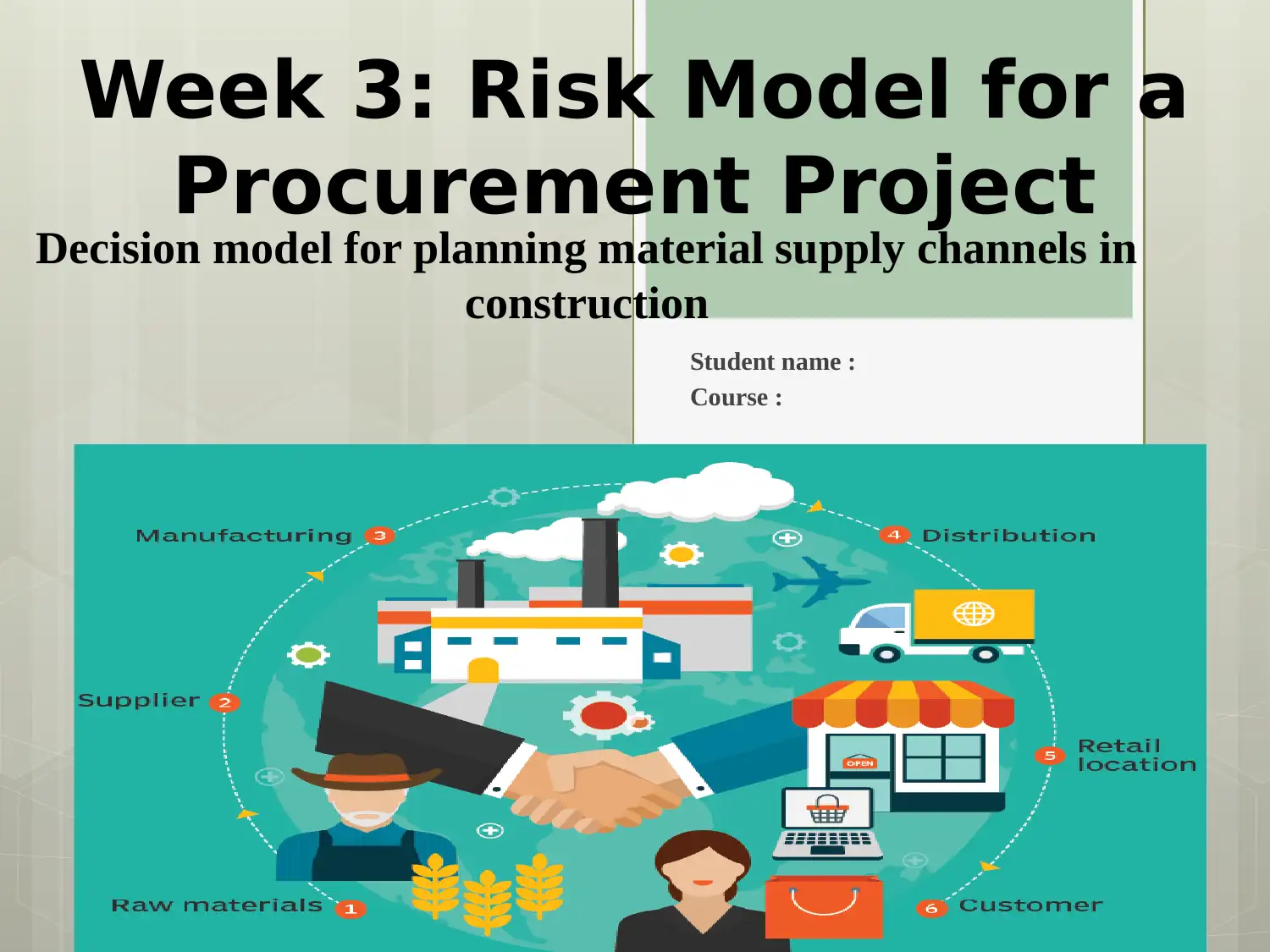
Student name :
Course :
Week 3: Risk Model for a
Procurement Project
Decision model for planning material supply channels in
construction
Course :
Week 3: Risk Model for a
Procurement Project
Decision model for planning material supply channels in
construction
Paraphrase This Document
Need a fresh take? Get an instant paraphrase of this document with our AI Paraphraser
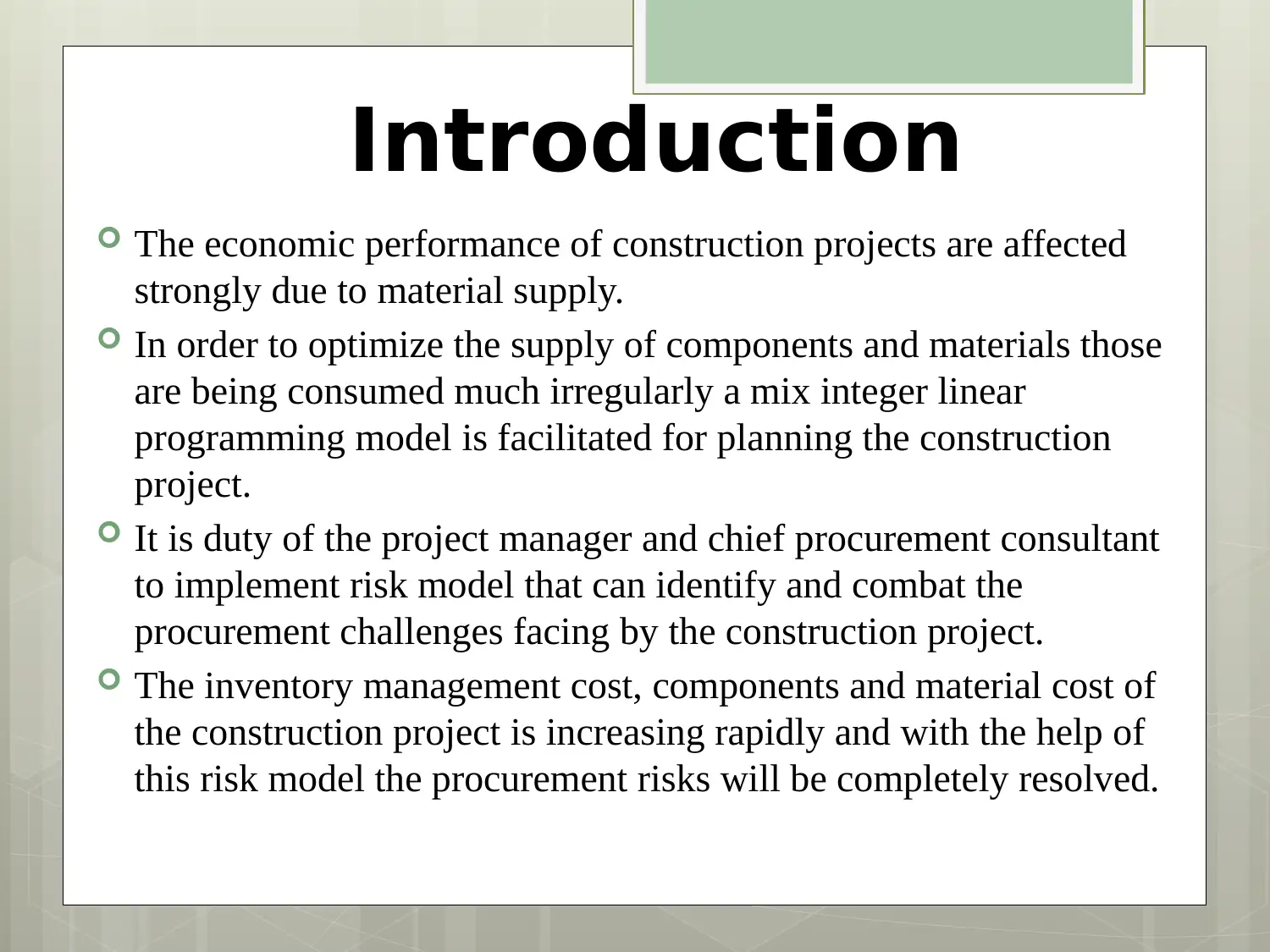
Introduction
The economic performance of construction projects are affected
strongly due to material supply.
In order to optimize the supply of components and materials those
are being consumed much irregularly a mix integer linear
programming model is facilitated for planning the construction
project.
It is duty of the project manager and chief procurement consultant
to implement risk model that can identify and combat the
procurement challenges facing by the construction project.
The inventory management cost, components and material cost of
the construction project is increasing rapidly and with the help of
this risk model the procurement risks will be completely resolved.
The economic performance of construction projects are affected
strongly due to material supply.
In order to optimize the supply of components and materials those
are being consumed much irregularly a mix integer linear
programming model is facilitated for planning the construction
project.
It is duty of the project manager and chief procurement consultant
to implement risk model that can identify and combat the
procurement challenges facing by the construction project.
The inventory management cost, components and material cost of
the construction project is increasing rapidly and with the help of
this risk model the procurement risks will be completely resolved.
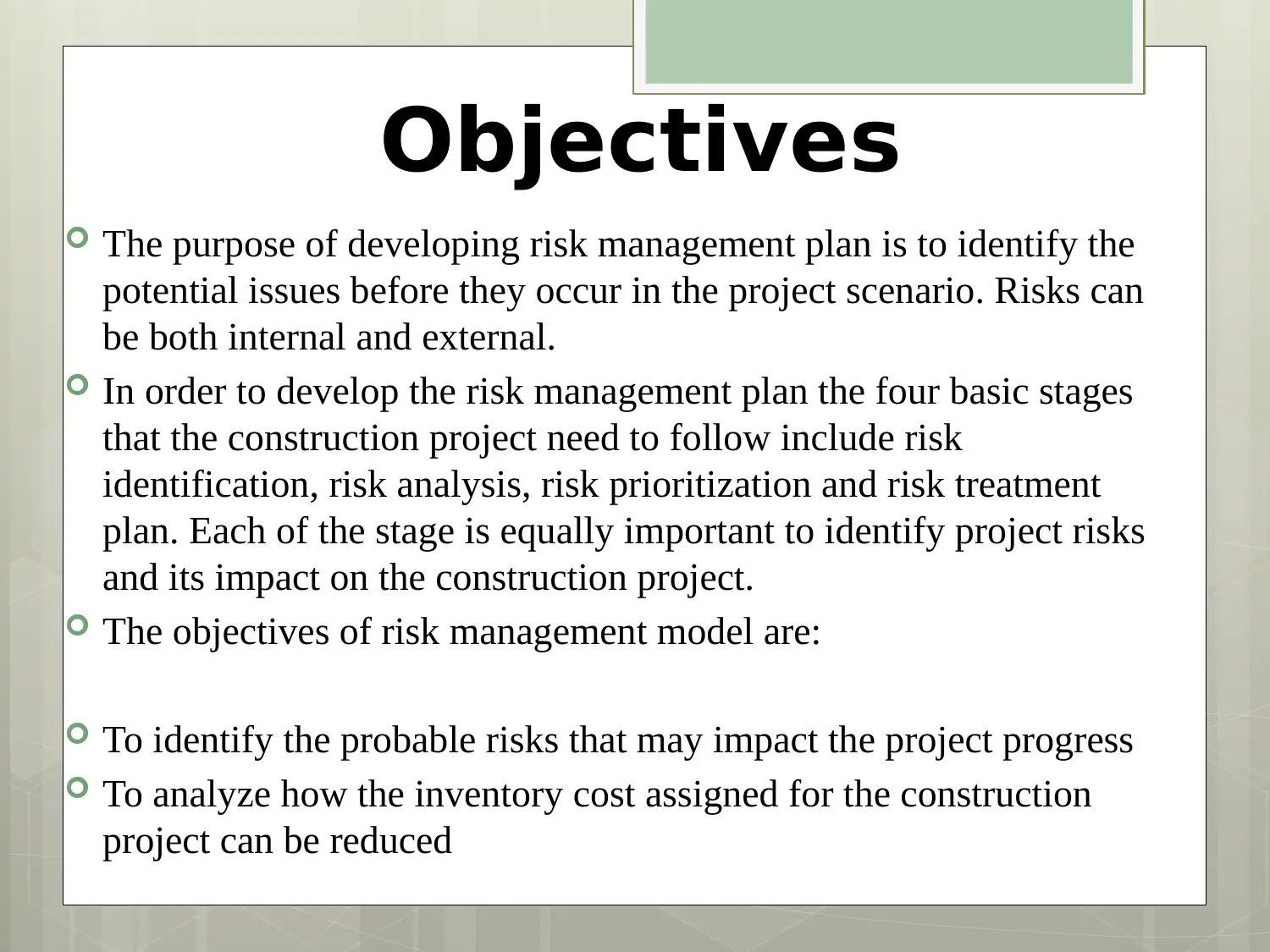
Objectives
The purpose of developing risk management plan is to identify the
potential issues before they occur in the project scenario. Risks can
be both internal and external.
In order to develop the risk management plan the four basic stages
that the construction project need to follow include risk
identification, risk analysis, risk prioritization and risk treatment
plan. Each of the stage is equally important to identify project risks
and its impact on the construction project.
The objectives of risk management model are:
To identify the probable risks that may impact the project progress
To analyze how the inventory cost assigned for the construction
project can be reduced
The purpose of developing risk management plan is to identify the
potential issues before they occur in the project scenario. Risks can
be both internal and external.
In order to develop the risk management plan the four basic stages
that the construction project need to follow include risk
identification, risk analysis, risk prioritization and risk treatment
plan. Each of the stage is equally important to identify project risks
and its impact on the construction project.
The objectives of risk management model are:
To identify the probable risks that may impact the project progress
To analyze how the inventory cost assigned for the construction
project can be reduced
⊘ This is a preview!⊘
Do you want full access?
Subscribe today to unlock all pages.

Trusted by 1+ million students worldwide
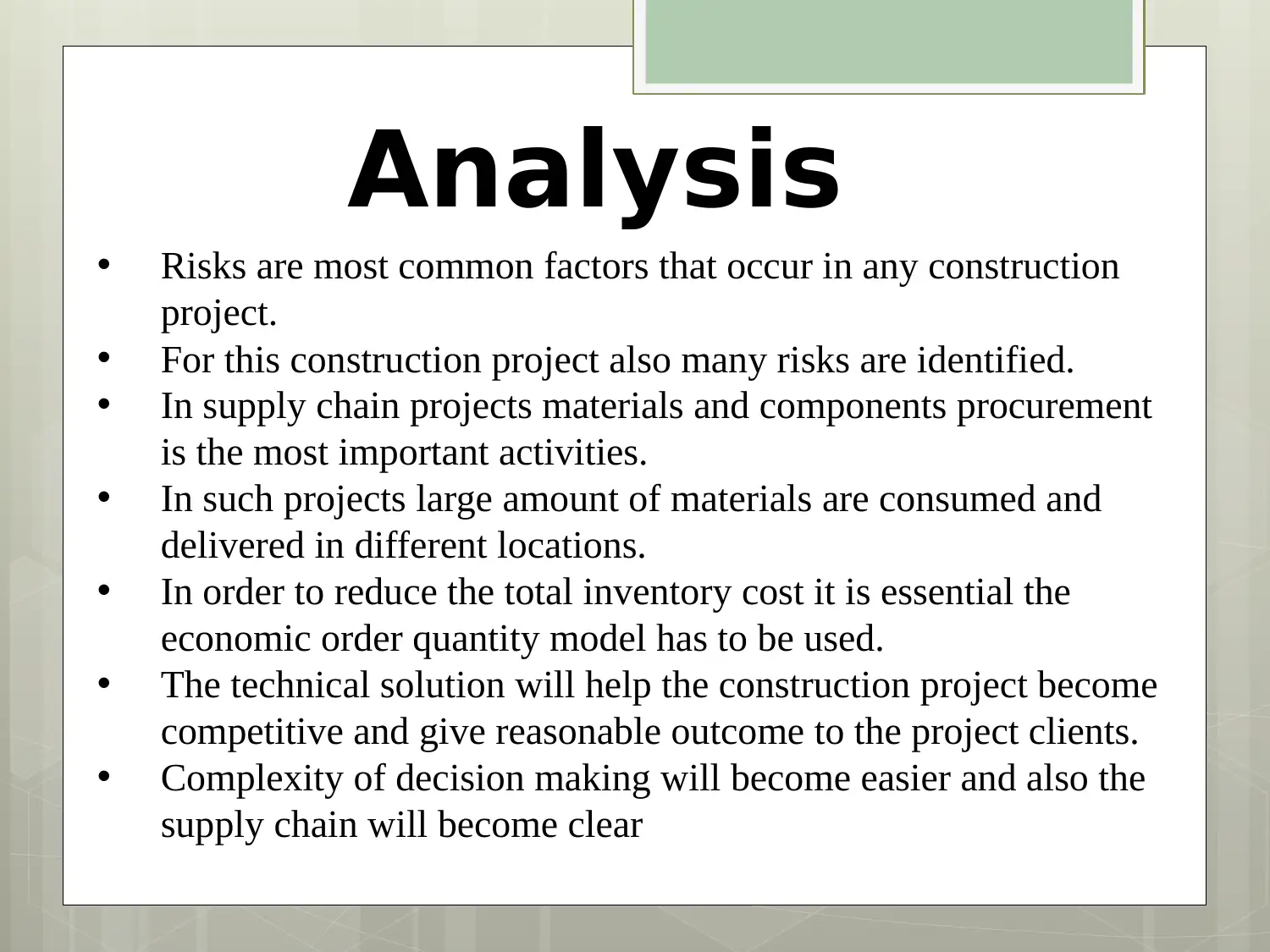
• Risks are most common factors that occur in any construction
project.
• For this construction project also many risks are identified.
• In supply chain projects materials and components procurement
is the most important activities.
• In such projects large amount of materials are consumed and
delivered in different locations.
• In order to reduce the total inventory cost it is essential the
economic order quantity model has to be used.
• The technical solution will help the construction project become
competitive and give reasonable outcome to the project clients.
• Complexity of decision making will become easier and also the
supply chain will become clear
Analysis
project.
• For this construction project also many risks are identified.
• In supply chain projects materials and components procurement
is the most important activities.
• In such projects large amount of materials are consumed and
delivered in different locations.
• In order to reduce the total inventory cost it is essential the
economic order quantity model has to be used.
• The technical solution will help the construction project become
competitive and give reasonable outcome to the project clients.
• Complexity of decision making will become easier and also the
supply chain will become clear
Analysis
Paraphrase This Document
Need a fresh take? Get an instant paraphrase of this document with our AI Paraphraser
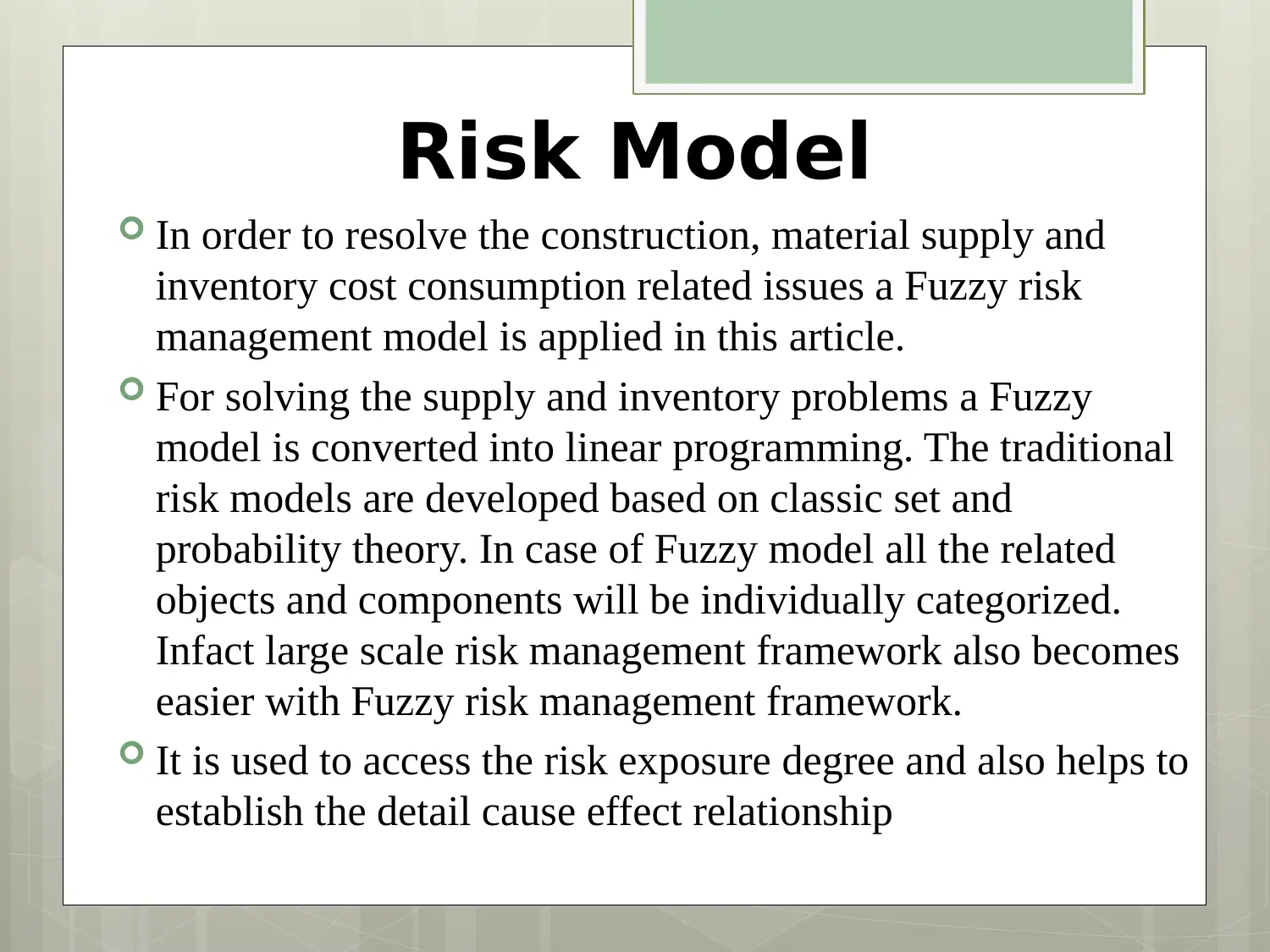
Risk Model
In order to resolve the construction, material supply and
inventory cost consumption related issues a Fuzzy risk
management model is applied in this article.
For solving the supply and inventory problems a Fuzzy
model is converted into linear programming. The traditional
risk models are developed based on classic set and
probability theory. In case of Fuzzy model all the related
objects and components will be individually categorized.
Infact large scale risk management framework also becomes
easier with Fuzzy risk management framework.
It is used to access the risk exposure degree and also helps to
establish the detail cause effect relationship
In order to resolve the construction, material supply and
inventory cost consumption related issues a Fuzzy risk
management model is applied in this article.
For solving the supply and inventory problems a Fuzzy
model is converted into linear programming. The traditional
risk models are developed based on classic set and
probability theory. In case of Fuzzy model all the related
objects and components will be individually categorized.
Infact large scale risk management framework also becomes
easier with Fuzzy risk management framework.
It is used to access the risk exposure degree and also helps to
establish the detail cause effect relationship
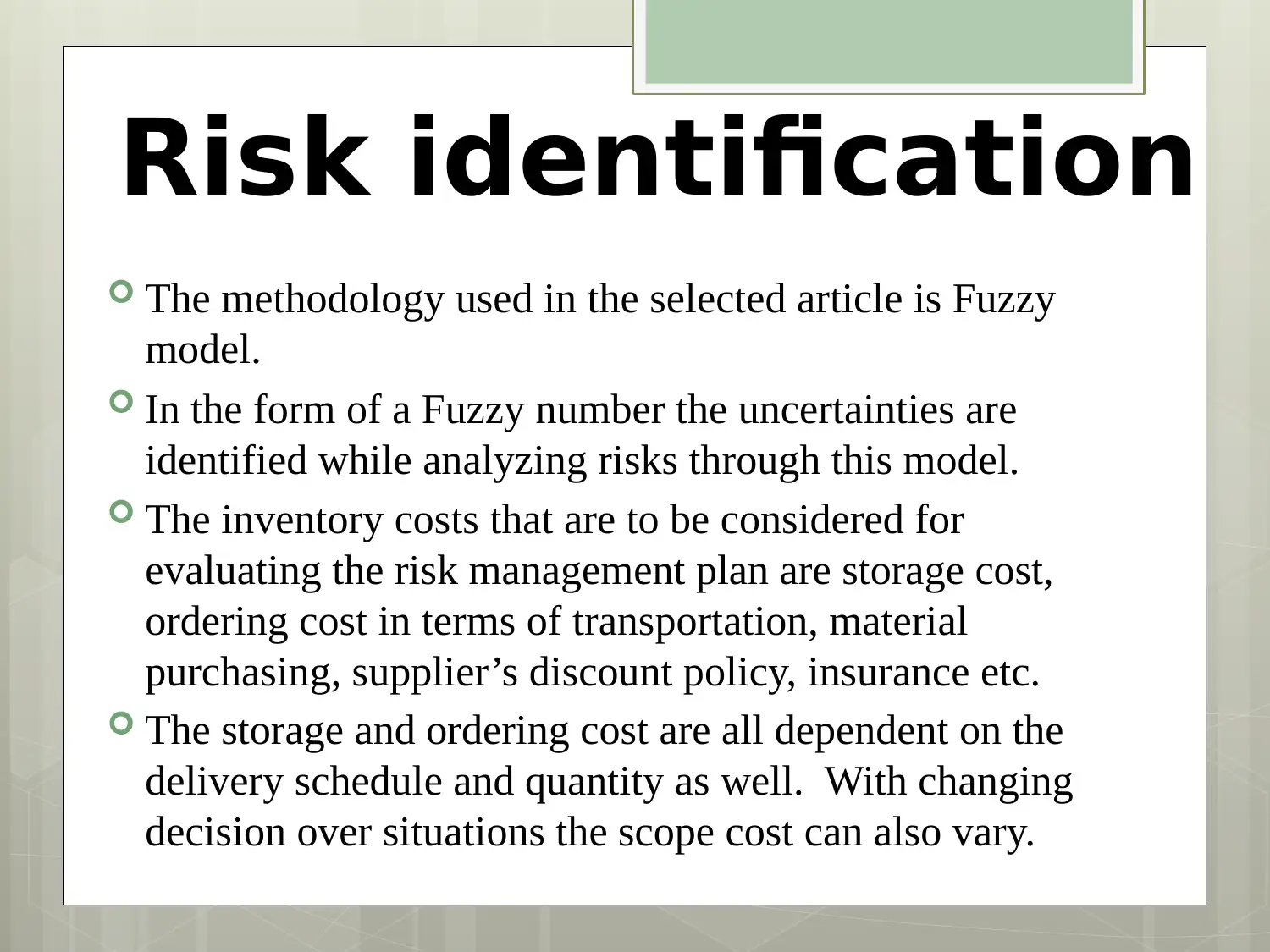
Risk identification
The methodology used in the selected article is Fuzzy
model.
In the form of a Fuzzy number the uncertainties are
identified while analyzing risks through this model.
The inventory costs that are to be considered for
evaluating the risk management plan are storage cost,
ordering cost in terms of transportation, material
purchasing, supplier’s discount policy, insurance etc.
The storage and ordering cost are all dependent on the
delivery schedule and quantity as well. With changing
decision over situations the scope cost can also vary.
The methodology used in the selected article is Fuzzy
model.
In the form of a Fuzzy number the uncertainties are
identified while analyzing risks through this model.
The inventory costs that are to be considered for
evaluating the risk management plan are storage cost,
ordering cost in terms of transportation, material
purchasing, supplier’s discount policy, insurance etc.
The storage and ordering cost are all dependent on the
delivery schedule and quantity as well. With changing
decision over situations the scope cost can also vary.
⊘ This is a preview!⊘
Do you want full access?
Subscribe today to unlock all pages.

Trusted by 1+ million students worldwide
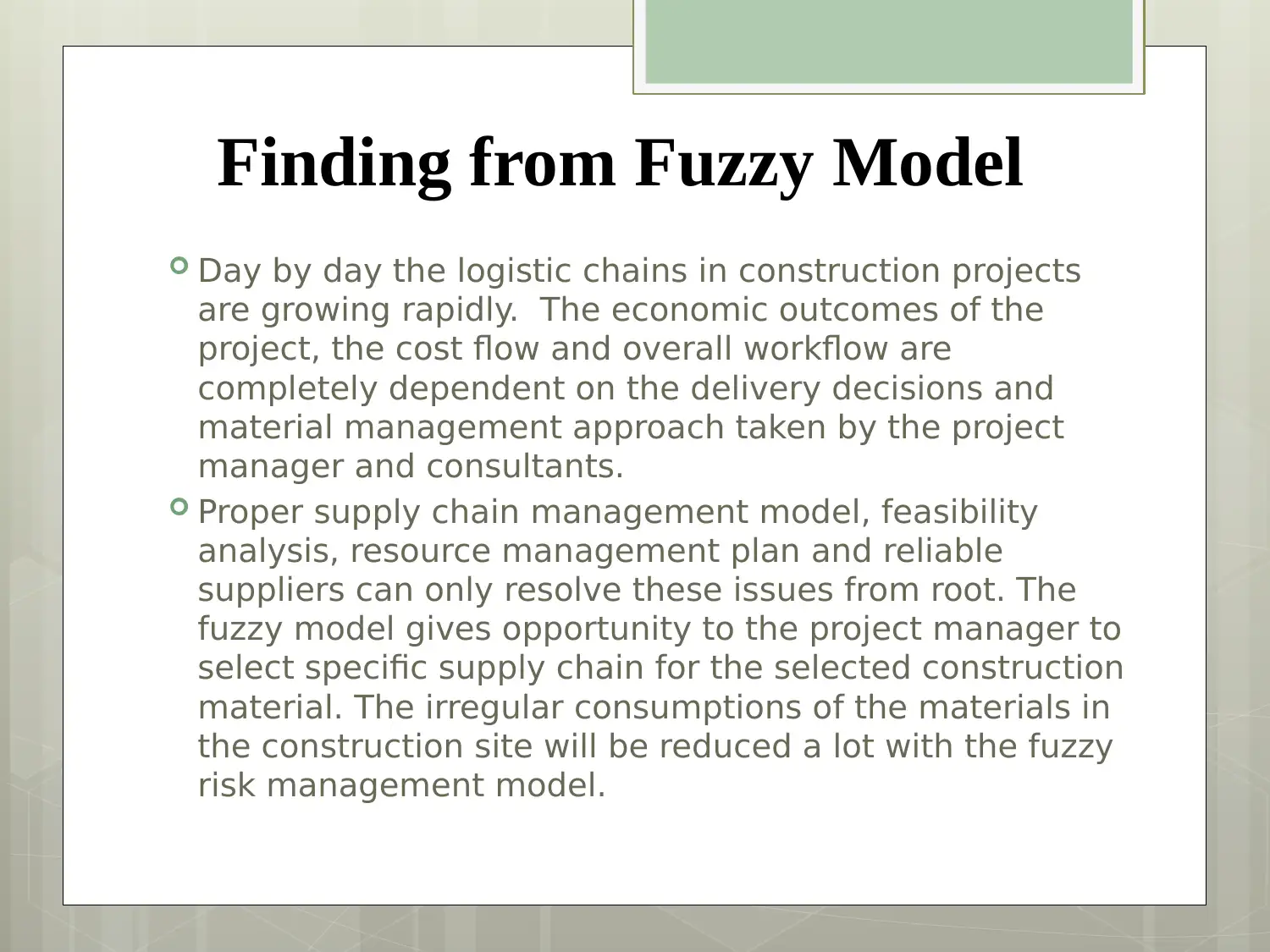
Finding from Fuzzy Model
Day by day the logistic chains in construction projects
are growing rapidly. The economic outcomes of the
project, the cost flow and overall workflow are
completely dependent on the delivery decisions and
material management approach taken by the project
manager and consultants.
Proper supply chain management model, feasibility
analysis, resource management plan and reliable
suppliers can only resolve these issues from root. The
fuzzy model gives opportunity to the project manager to
select specific supply chain for the selected construction
material. The irregular consumptions of the materials in
the construction site will be reduced a lot with the fuzzy
risk management model.
Day by day the logistic chains in construction projects
are growing rapidly. The economic outcomes of the
project, the cost flow and overall workflow are
completely dependent on the delivery decisions and
material management approach taken by the project
manager and consultants.
Proper supply chain management model, feasibility
analysis, resource management plan and reliable
suppliers can only resolve these issues from root. The
fuzzy model gives opportunity to the project manager to
select specific supply chain for the selected construction
material. The irregular consumptions of the materials in
the construction site will be reduced a lot with the fuzzy
risk management model.
Paraphrase This Document
Need a fresh take? Get an instant paraphrase of this document with our AI Paraphraser
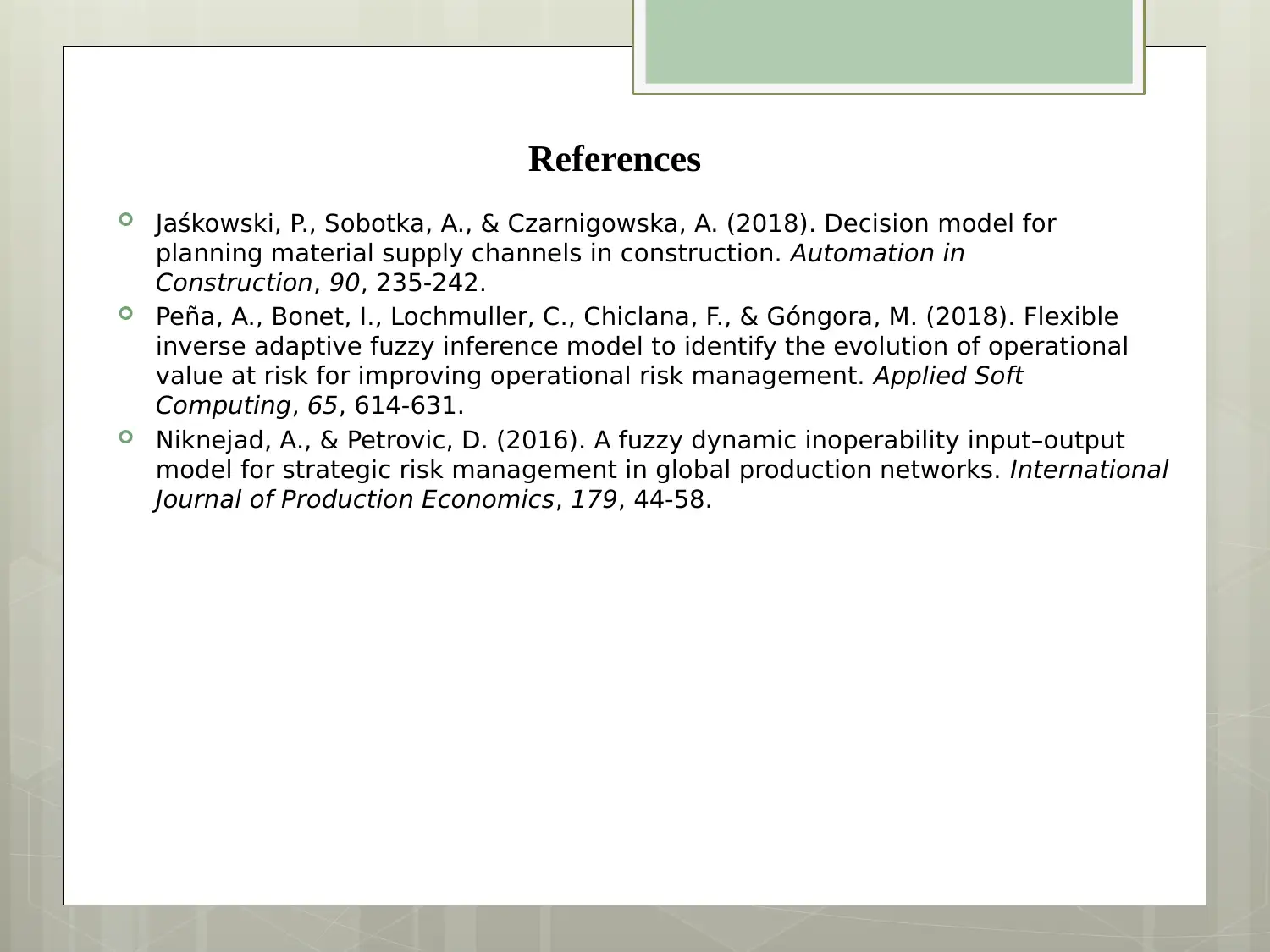
References
Jaśkowski, P., Sobotka, A., & Czarnigowska, A. (2018). Decision model for
planning material supply channels in construction. Automation in
Construction, 90, 235-242.
Peña, A., Bonet, I., Lochmuller, C., Chiclana, F., & Góngora, M. (2018). Flexible
inverse adaptive fuzzy inference model to identify the evolution of operational
value at risk for improving operational risk management. Applied Soft
Computing, 65, 614-631.
Niknejad, A., & Petrovic, D. (2016). A fuzzy dynamic inoperability input–output
model for strategic risk management in global production networks. International
Journal of Production Economics, 179, 44-58.
Jaśkowski, P., Sobotka, A., & Czarnigowska, A. (2018). Decision model for
planning material supply channels in construction. Automation in
Construction, 90, 235-242.
Peña, A., Bonet, I., Lochmuller, C., Chiclana, F., & Góngora, M. (2018). Flexible
inverse adaptive fuzzy inference model to identify the evolution of operational
value at risk for improving operational risk management. Applied Soft
Computing, 65, 614-631.
Niknejad, A., & Petrovic, D. (2016). A fuzzy dynamic inoperability input–output
model for strategic risk management in global production networks. International
Journal of Production Economics, 179, 44-58.
1 out of 8
Related Documents
Your All-in-One AI-Powered Toolkit for Academic Success.
+13062052269
info@desklib.com
Available 24*7 on WhatsApp / Email
![[object Object]](/_next/static/media/star-bottom.7253800d.svg)
Unlock your academic potential
Copyright © 2020–2025 A2Z Services. All Rights Reserved. Developed and managed by ZUCOL.




